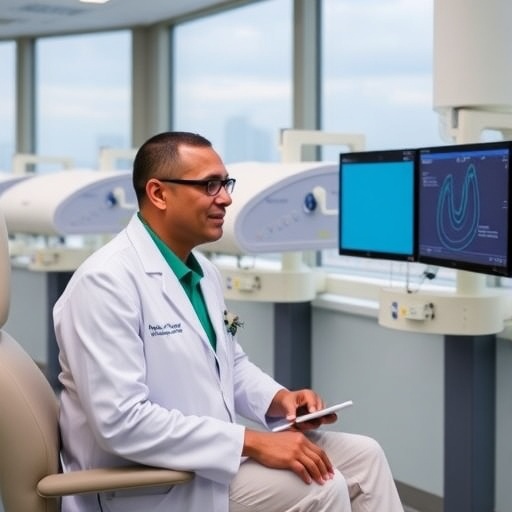COLLEGE PARK, Md. — A team of researchers at the University of Maryland Energy Research Center and A. James Clark School of Engineering have announced a transformative development in the race to produce batteries that are at once safe, powerful, and affordable.
The researchers are developing game-changing solid-state battery technology, and have made a key advance by inserting a layer of ultra-thin aluminum oxide between lithium electrodes and a solid non-flammable ceramic electrolyte known as garnet. Prior to this advance, there had been little success in developing high-performance, garnet-based solid-state batteries, because the high impedance, more commonly called resistance, between the garnet electrolyte and electrode materials limited the flow of energy or current, dramatically decreasing the battery's ability to charge and discharge.
The University of Maryland team has solved the problem of high impedance between the garnet electrolyte and electrode materials with the layer of ultrathin aluminum oxide, which decreases the impedance 300 fold. This virtually eliminates the barrier to electricity flow within the battery, allowing for efficient charging and discharging of the stored energy.
A new paper describing the research was published online December 19 in the peer-reviewed journal Nature Materials.
"This is a revolutionary advancement in the field of solid-state batteries–particularly in light of recent battery fires, from Boeing 787s to hoverboards to Samsung smartphones," said Liangbing Hu, associate professor of materials science and engineering and one of the corresponding authors of the paper. "Our garnet-based solid-state battery is a triple threat, solving the typical problems that trouble existing lithium-ion batteries: safety, performance, and cost."
Lithium-ion batteries typically contain a liquid organic electrolyte that can catch fire, as shown by numerous consumer electronic battery fires and even the temporary grounding of the Boeing 787 fleet for a series of battery fires. This fire risk is eliminated by the UMD team's use of the non-flammable garnet-based solid-state electrolyte.
"The work by [the University of Maryland research team] effectively solves the lithium metal-solid electrolyte interface resistance problem, which has been a major barrier to the development of a robust solid-state battery technology," said Bruce Dunn, UCLA materials science and engineering professor. Dunn, a leading expert in energy storage materials, was not involved in this research.
In addition, the high stability of these garnet electrolytes enable the team to use metallic lithium anodes, which contain the greatest possible theoretical energy density and are considered the 'holy grail' of batteries. Combined with high-capacity sulfur cathodes, this all solid-state battery technology offers a potentially unmatched energy density that far outperforms any lithium-ion battery currently on the market.
"This technology is on the verge of changing the landscape of energy storage. The broad deployment of batteries is critical to increase the flexibility of how and when energy is used, and these solid-state batteries will both increase the safety and decrease size, weight, and cost of batteries," said Eric Wachsman, professor and director of the University of Maryland Energy Research Center and the other corresponding author of the paper.
"This [finding] is of considerable interest to those working to replace the flammable liquid electrolyte of the lithium-ion rechargeable battery with a solid electrolyte from which a lithium anode can be plated dendrite-free when a cell is being charged," said acclaimed lithium-ion battery pioneer John B. Goodenough, Virginia H. Cockrell Centennial Chair in Engineering at the University of Texas, who was unaffiliated with the study.
###
The paper, "Negating Interfacial Impedance in Garnet-Based Solid-State Li-Metal Batteries," Xiaogang Han, Yunhui Gong, Kun Fu, Xingfeng He, et al., was published online December 19 in the journal Nature Materials.
This work was supported by the U.S. Department of Energy ARPA-E RANGE (entitled "Safe, Low-Cost, High-Energy-Density, Solid-State Li-Ion Batteries") and EERE (entitled "Overcoming Interfacial Impedance in Solid-State Batteries").
The A. James Clark School of Engineering at the University of Maryland serves as the catalyst for high-quality research, innovation, and learning, delivering on a promise that all graduates will leave ready to impact the Grand Challenges (energy, environment, security, and human health) of the 21st century. The Clark School is dedicated to leading and transforming the engineering discipline and profession, to accelerating entrepreneurship, and to transforming research and learning activities into new innovations that benefit millions. Visit us online at http://www.eng.umd.edu and follow us on Twitter @ClarkSchool.
Media Contact
Melissa L. Andreychek
[email protected]
301-405-0292
@UMDRightNow
http://www.umdrightnow.umd.edu/
############
Story Source: Materials provided by Scienmag




